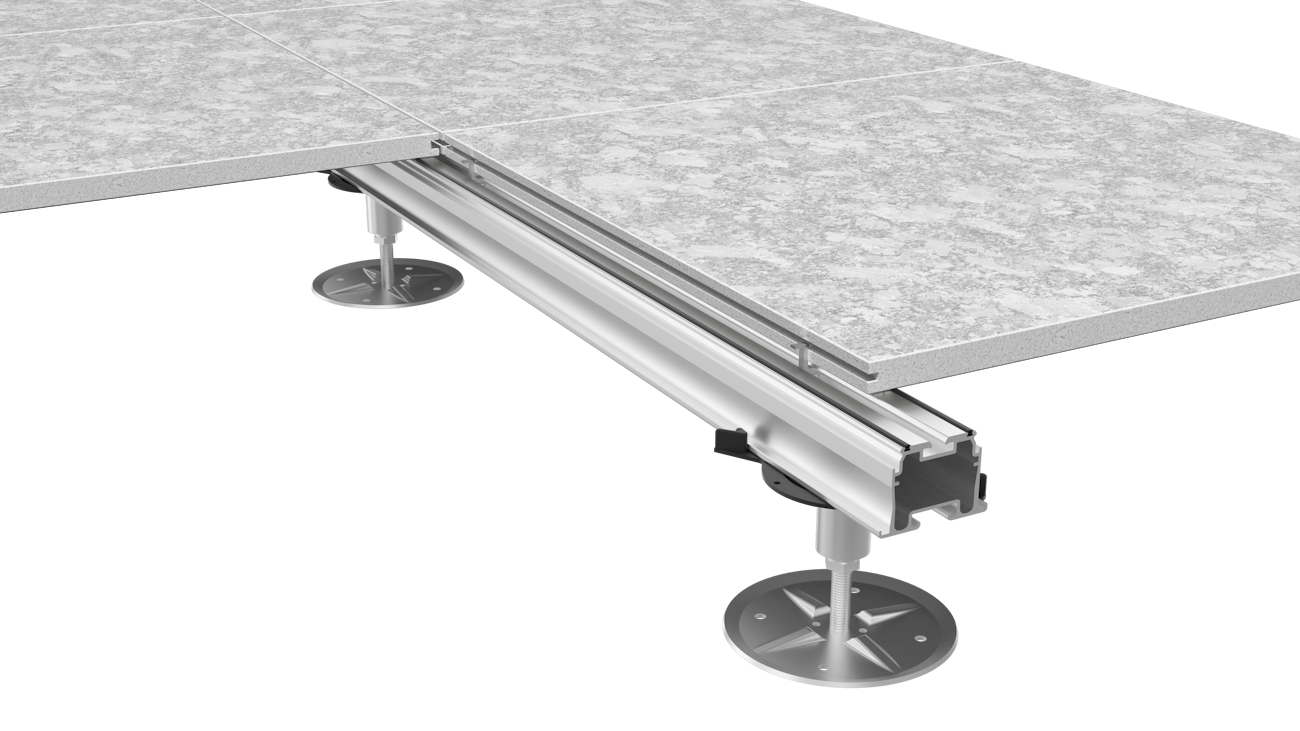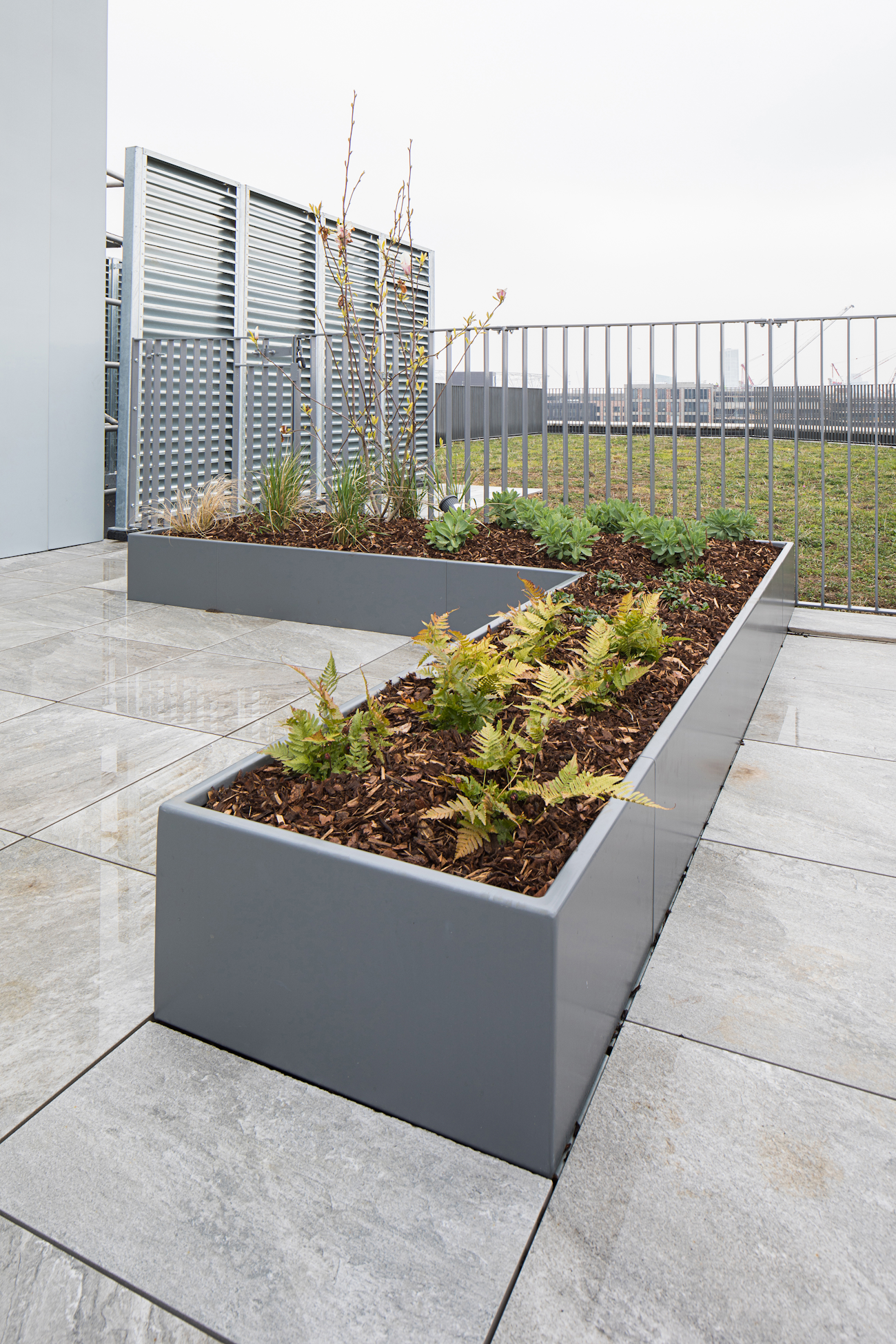Preventing Wind Uplift: Glue vs. Clips

What is wind uplift?
Air flowing across the top of an aeroplane wing is faster than the air movement under the wing, reducing the air pressure above the wing and causing it to lift. While this is the intended effect, the same principle often occurs on horizontal structures of buildings such as canopies, awnings and roof terraces, where it is unwanted. In this blog post, we will look at why wind uplift can be a problem on roof terraces and what can be done to prevent it.

Why is wind uplift a problem on roof terraces?
Unless added protection against wind uplift is required, terrace decking materials are frequently held in place by a simple frame and their own weight.
But roofs are often exposed to higher winds than other locations due to their altitude and lack of protection from surrounding buildings, and wind uplift isn’t uncommon. The problem is further compounded by the fact that roof terrace systems generally feature a raised deck on a platform of joists, creating a void underneath the deck where still air will be at a higher pressure than the air moving across the top surface, adding to the wind uplift.
Wind uplift can be a surprisingly strong force, capable of lifting even heavy porcelain and stone, and this can have unpleasant consequences: damage to the decking material, terrace system structure and surrounding objects and even causing injury or death.

Are construction adhesives the answer to wind uplift?
One common solution to wind uplift is to fix the decking material in place with some form of adhesive, mastic or glue, and there are many products available that are able to resist the exposed weather conditions of a roof and hold the decking material in place, even in reasonably high winds.
The downside of this solution is that adhesives can be too permanent, and if access is required to the space underneath for servicing, maintenance and repair, the decking material needs to be lifted. Removing the adhesive is a time-consuming, thankless task that isn’t always successful: it can stick so permanently that the decking material is damaged during its removal.
_gpicx.JPG?w=1300&h=&q=90&auto=format&fit=crop&crop=edges,focalpoint&fm=png)
Tackling wind uplift with clips
Another solution is to use clips to hold the decking material in place. But be aware – not all clips are created equal. Many clips are designed to allow access only by progressively removing all of the decking material from one edge until the required access point is reached. Although not as laborious or potentially damaging as using adhesive, this can still lead to unnecessary work and disruption.
The anti-wind uplift clips designed by Raaft for their Terrace System are strong enough to hold porcelain tiles and planking securely in place while remaining so unobtrusive that they are virtually invisible, but are also designed so that individual tiles and planks can be removed to provide access.
As a leading UK designer and manufacturer of roof terrace and planter systems, roof decking and tiles, Raaft is familiar with the challenges of wind uplift and is a leading innovator of products to solve this problem. We have also produced a helpful Wind Uplift Resistance Guide as a FREE downloadable PDF. If you would like further advice on preventing wind uplift, contact us on +44 (0)20 3146 7879 or at [email protected]. Alternatively, send us a message via our website enquiry form and one of our technical support team will respond promptly.